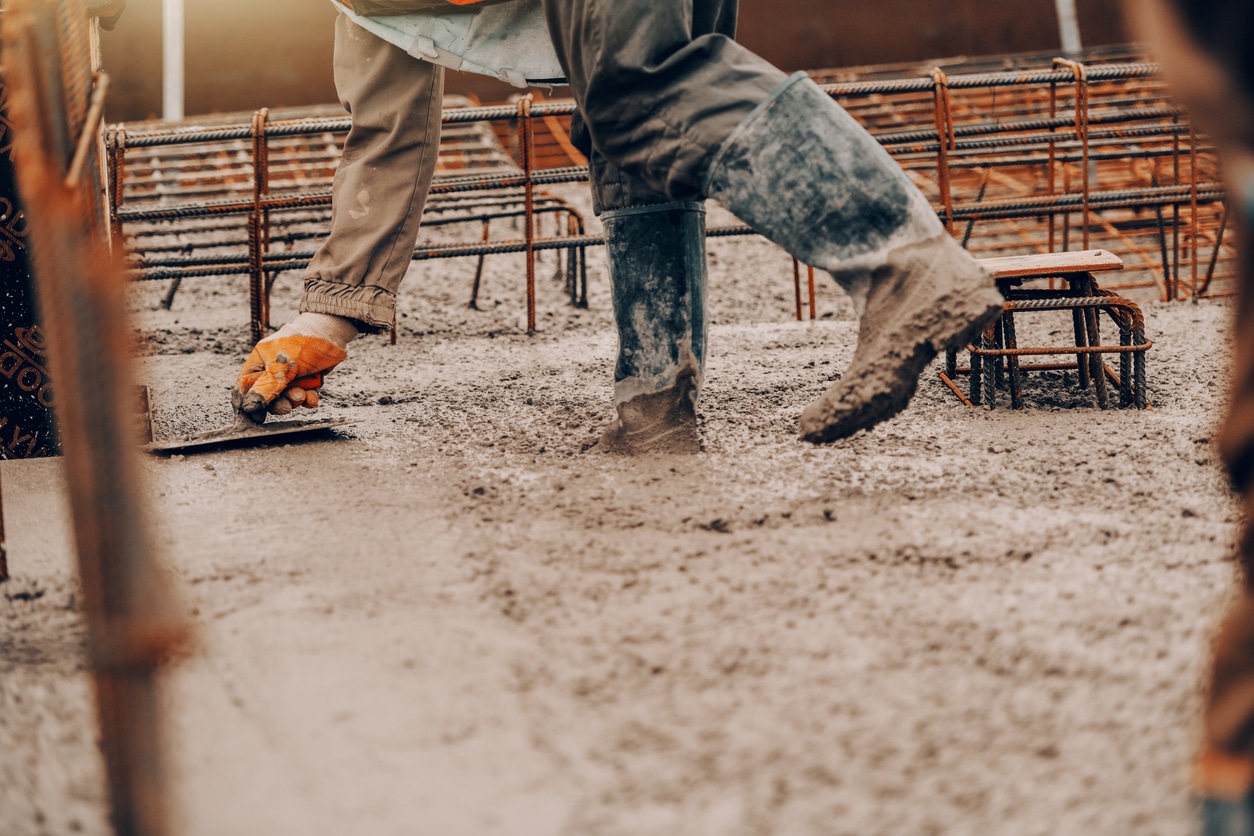
Table of Contents
- Introduction
- Recycled Materials in Concrete Repair
- Geopolymer Concrete
- Self-Healing Concrete
- Hydrodemolition Techniques
- Carbon Capture in Concrete Production
- Fiber-Reinforced Concrete
- Digital Technologies in Concrete Repair
- Future Trends in Sustainable Concrete Repair
Concrete infrastructure worldwide is facing increasing strain due to environmental factors, aging structures, and population growth. Traditional repair techniques often generate significant carbon emissions and landfill waste. To address these issues and rising costs, sustainable, innovative approaches are essential. Modern era offers eco-friendly materials and advanced techniques that can revolutionize concrete repair and maintenance. These methods benefit the environment and improve longevity and total ownership costs for critical assets. By turning to innovations promoted by industry leaders such as https://www.keflatwork.com/concrete-repair-replacement/, construction professionals, engineers, and facility managers can ensure they are using the most effective solutions on the market while directly contributing to the reduction of their projects’ ecological footprints. This dual impact of sustainability and enhanced performance is helping to set new standards for infrastructure repair in both the public and private sectors.
Recycled Materials in Concrete Repair
One of the most accessible and impactful steps toward sustainable repair is the use of recycled materials, particularly those harvested from construction and demolition projects. These materials can include crushed, reclaimed concrete, repurposed aggregates, and waste by-products from industrial processes. Recycled aggregate concrete (RAC) is notable for its potential to reduce reliance on virgin materials, which are typically obtained through environmentally damaging quarrying operations. By substituting up to 30% of natural aggregates with recycled counterparts, contractors can help decrease the extraction of new resources while also diverting waste from overcrowded landfills.
Research indicates that this integration of recycled content can be achieved without materially compromising structural strength or durability, especially when best practices are followed in material selection and mixing methods. In addition to resource conservation, the use of recycled materials in concrete repair has a profound effect on the project’s lifecycle carbon emissions, often reducing them by up to 20%. These advantages, coupled with continually improving recycling technologies, make recycled materials a preferred choice for forward-thinking repair specialists committed to sustainable practices.
Geopolymer Concrete
Geopolymer concrete represents a leap forward in the quest to make concrete repair greener and more robust. Unlike traditional Portland cement–based products, geopolymer mixes rely on industrial waste materials such as fly ash (from coal-fired power plants) and slag (from steel mills) as key binding agents. Through a unique chemical process, these by-products are transformed into a strong, highly durable matrix that boasts impressive resistance to chemical attack, moisture ingress, and thermal stress. This makes geopolymer concrete an excellent candidate not only for environmental reasons, but also for use in aggressive repair settings like wastewater facilities, coastal infrastructure, and highways exposed to de-icing salts.
Perhaps most compelling, however, is geopolymer concrete’s significant environmental advantage. Studies reveal these mixes can slash associated carbon emissions by 60-80% compared to ordinary cement. The approach also addresses the challenge of industrial by-product disposal, essentially turning a waste stream into a valuable construction resource. For municipalities and large contractors aiming to meet aggressive climate targets, or for those seeking LEED certification points, geopolymer solutions offer both practicality and planetary benefit.
Self-Healing Concrete
Among the most exciting advancements in sustainable repair is self-healing concrete. Recent innovations have focused on embedding concrete with special agents—micro-encapsulated healing agents or bacteria—that react when cracks begin to form, triggering a sealing process. Drexel University’s “BioFiber,” for instance, utilizes polymer fibers seeded with bacterial cultures that, when exposed to moisture, activate and generate calcium carbonate (limestone) to automatically close the fissure, stopping further degradation in its tracks. This biologically inspired repair mechanism means that damage is often mended before traditional maintenance teams would even notice its presence.
The adoption of self-healing concrete can substantially extend the lifespan of repaired structures, as it addresses minor flaws without the need for costly, energy-intensive interventions. Consequently, it significantly reduces long-term maintenance demands, labor, and material usage—all of which translate into a smaller overall environmental impact. Infrastructure exposed to repeated wet-dry cycles or structural flexing stands to benefit especially from this innovative technology.
Hydrodemolition Techniques
Hydrodemolition is rapidly gaining a reputation as a sustainable alternative for selective concrete removal. By relying on highly pressurized water jets rather than pneumatic tools or heavy machinery, hydrodemolition allows for the precise eradication of only the damaged or unsound parts of a structure, leaving the healthy substrate undisturbed. This accuracy reduces the risk of microcracks and collateral surface damage, thereby minimizing the need for extensive repair and reducing the volume of waste generated.
Notably, studies have shown that concrete surfaces prepared using hydrodemolition techniques bond more effectively with repair materials, resulting in repairs that may last up to three times longer compared to those made with conventional removal methods. An added environmental benefit is that both the water and concrete debris can typically be recaptured and recycled, with advanced filtration systems allowing wastewater to be cleaned and reused multiple times on site. This closed-loop approach makes hydrodemolition both an efficient and environmentally friendly solution.
Carbon Capture in Concrete Production
The integration of carbon capture technology into concrete production is revolutionizing the field by turning a major pollutant into an asset. This process involves infusing captured CO2—collected from industrial or energy facilities—directly into fresh concrete, where it reacts to form stable mineral compounds that remain locked within the cured structure. Not only does this method prevent harmful gases from entering the atmosphere, but the resulting chemical reaction can improve the compressive strength and durability of the final repair material.
As global efforts to manage and mitigate greenhouse gases intensify, the value of carbon capture in concrete repair will continue to grow. By leveraging this innovation, concrete manufacturers and users can actively participate in broader climate solutions, cutting their carbon footprints and supporting the transition to net-zero construction practices without sacrificing material performance.
Fiber-Reinforced Concrete
Fiber-reinforced concrete (FRC) leverages the unique strengths of both synthetic and natural fibers to enhance crack resistance, tensile strength, and structural integrity. Fibers such as steel, glass, polypropylene, and increasingly, renewable resources like bamboo and hemp can be added to the mix in precise proportions to meet project-specific demands. The use of sustainable natural fibers makes FRC not only strong but also more environmentally friendly than conventional reinforced concrete.
FRC offers tangible benefits for infrastructure projects where heavy loads, traffic, or seismic activity may otherwise cause rapid deterioration. An excellent case study—in the Phoenix Metro Valley light rail project—demonstrated FRC’s capacity to shorten construction schedules, streamline installation, and lower costs altogether. With ongoing materials innovations, FRC is poised to become a blueprint for resilient, sustainable urban infrastructure around the globe.
Digital Technologies in Concrete Repair
The advent of digital technologies has fundamentally changed how concrete repair is planned, managed, and executed. Building Information Modeling (BIM) offers powerful tools for optimizing every aspect of a repair—providing accurate tracking, resource allocation, and phasing to ensure nothing is wasted. BIM also enhances collaboration among project teams and stakeholders, allowing for a truly integrated approach to sustainability.
Meanwhile, 3D printing is opening new frontiers for the repair and prefabrication of complex concrete components. By enabling custom, highly detailed shapes and layers with minimal material use, 3D printing reduces both material waste and overall project timelines. Digital solutions like these are key to achieving greener, smarter, and more cost-effective repairs, all while ensuring the highest standards of durability and safety.
Future Trends in Sustainable Concrete Repair
Looking ahead, the future of sustainable concrete repair is filled with creative promise and breakthroughs across several scientific fields. Innovations in nanotechnology may soon allow for denser, more resilient repair matrices with enhanced self-healing and contaminant-resistance properties. The adoption of bio-based admixtures and polymers made from renewable sources could further reduce the environmental impact of repair materials. In contrast, embedded sensing technologies now enable real-time monitoring of infrastructure health, facilitating smart maintenance before small issues escalate.
As urban centers and governments around the world push toward stricter environmental regulations, the demand for advanced, sustainable repair solutions will only intensify. By embracing these technologies and best practices, organizations can significantly reduce maintenance budgets, shrink their carbon footprints, and help ensure infrastructure stands the test of time. The key to capitalizing on this shift lies in continuous learning, regular evaluation of emerging technologies, and partnerships with reputable, sustainability-focused repair specialists.
